The German Z.W.38 medium tank that entered production in early 1939 was having a hard time on the assembly line. The Pz.Kpfw.III Ausf.E was better than its predecessors, but still had a large number of drawbacks. It turned out that driving at a speed greater than 40 kph resulted in rapid destruction of road wheels rims. There were also issues with the gearbox that had to be solved during production. Nevertheless, the PzIII gradually became the backbone of the German tank forces. The subsequent Ausf.G and Ausf.H variants became steps on the way to more numerous models of this vehicle. These tanks were the most numerous German tanks during the first year of the Great Patriotic War.
Additional order
Issues with the PzIII Ausf.E gearbox popped up at the worst possible time. Germany started WWII and its army was in dire need of a large amount of medium tanks. However, it turned out that the attempt to make the driver's life easier had an opposite effect. The 10-speed semiautomatic Maybach Variorex 328 145 gearbox resulted in a massive headache. Not only tankers, but the director of Daimler-Benz Werk 40 complained about it. Heinrich Kniepkamp, the author of the Z.W.38 concept, took a big hit in credibility.
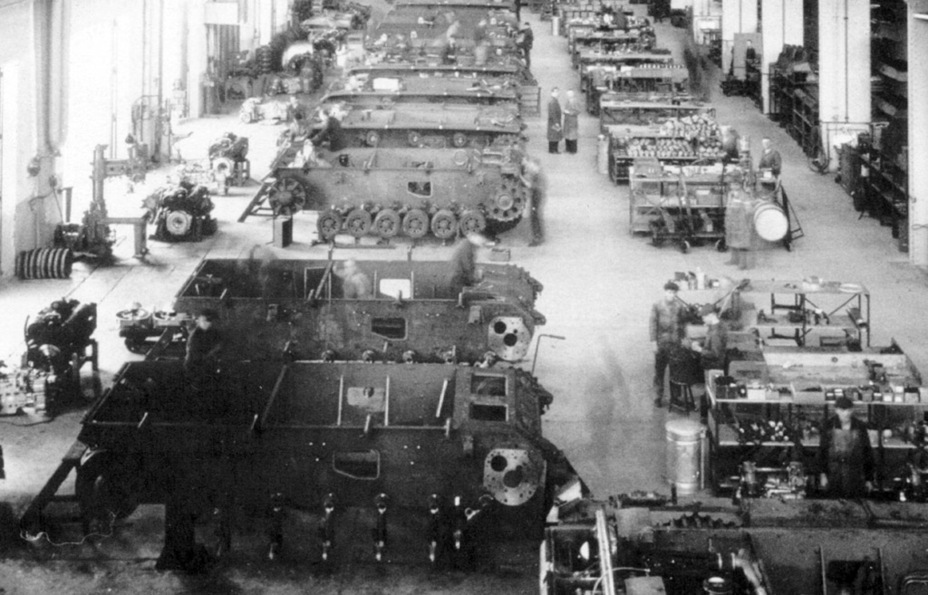
It was clear by 1938 that the Z.W.38 was faring poorly, and Daimler-Benz began working on the VK 20.01 (III), a medium tank that would replace the Z.W.38. In the fall of 1939 Daimler-Benz obtained permission to work without the interference of the 6th Department of the Armament Directorate, without control from Knipkamp. Later, Kniepkamp would have his revenge on the company. The most surprising thing about this whole story is that the man himself faced no repercussions.
Since the war was in progress and it was too late to do anything, In 6 (Inspekteur für Heeresmotorisierung, Inspection of Motorized Forces) made the decision to continue production of the PzIII Ausf.F in the fall of 1939. However, orders to alter the chassis were given. Instead of the troublesome Maybach Variorex the old 6-speed SSG 76 was returned. It would not be a quick job to put this change into production, so the decision to produce another batch of tanks with the Maybach Variorex gearbox. In documents this batch is referred to as the 6./Z.W.Serie, or Pz.Kpfw.III Ausf.G. At this stage, these tanks were no different from PzIII Ausf.F tanks. The order for 800 Z.W.Serie tanks placed in 1937 was reduced to 600.
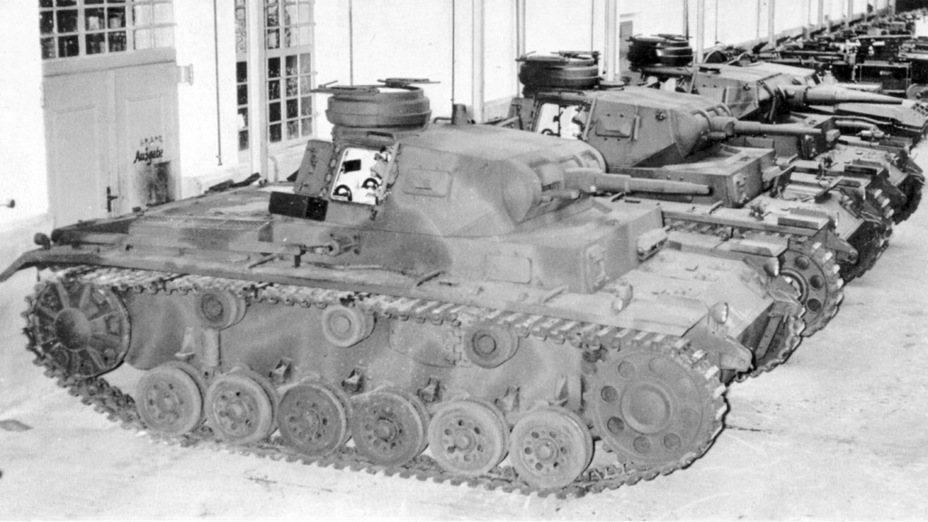
When a decision to make a 6th batch of PzIII tanks was made, 6 organizations were working on assembling the tank. Another one was included when the Heereswaffenamt (Directorate of Armament of the Land Forces) made another order. This company was MNH (Maschinenfabrik Niedersachsen Hannover). This new factory was built in 1939 specifically for military purposes. It was used to build 50 tanks with serial numbers 65901-65950.
As before, Henschel received the largest order. In total, 155 tanks were built with serial numbers 65101-65255. Wegmann worked with Henschel to produce a portion of the tanks' turrets. Later, the Henschel-Wegmann duo would produce the Tiger tank.
Alkett received the second largest order. 150 PzIII Ausf.G tanks were built in Spandau with serial numbers 65401-65550. MAN built 90 tanks with serial numbers 65001-65090. MIAG build 80 tanks, 65720-65799. Daimler-Benz Werk 40 built only 60 tanks, 65801-65860, but FAMO in Breslau built even fewer. The factory was overloaded with PzII production, and built only 15 tanks with serial numbers 65365-65379.
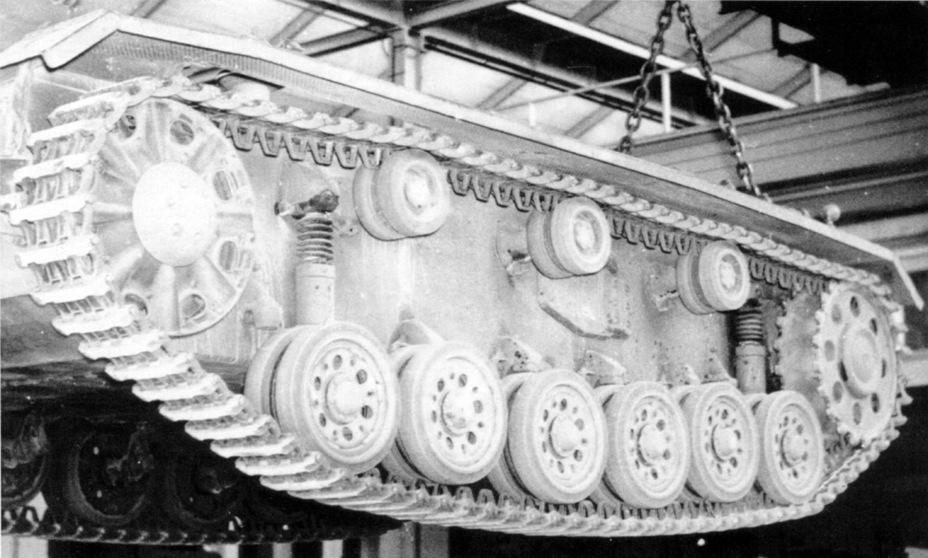
Production of the PzIII Ausf.G began in March of 1940. Henschel was one of the first to release a new tank, putting out 6 of them in March. It was easy to distinguish these tanks from the PzIII Ausf.F. The driver received a new observation device (part 021 B 9288), which was more resistant to enemy fire. At the same time, the tank received the new K.F.F.2 combat driving device. Unlike the earlier K.F.F.IV it did not use mirrors, but more reliable prisms. The upper rear plate was now 30 mm thick, and the hatch in it was redesigned. The number of signal hatches in the roof of the turret was reduced to one. A new fan was introduced, which improved the situation with ventilation during firing. Finally, the tank received a new commander's cupola (part 021 B 9292) with better protection of observation slits.
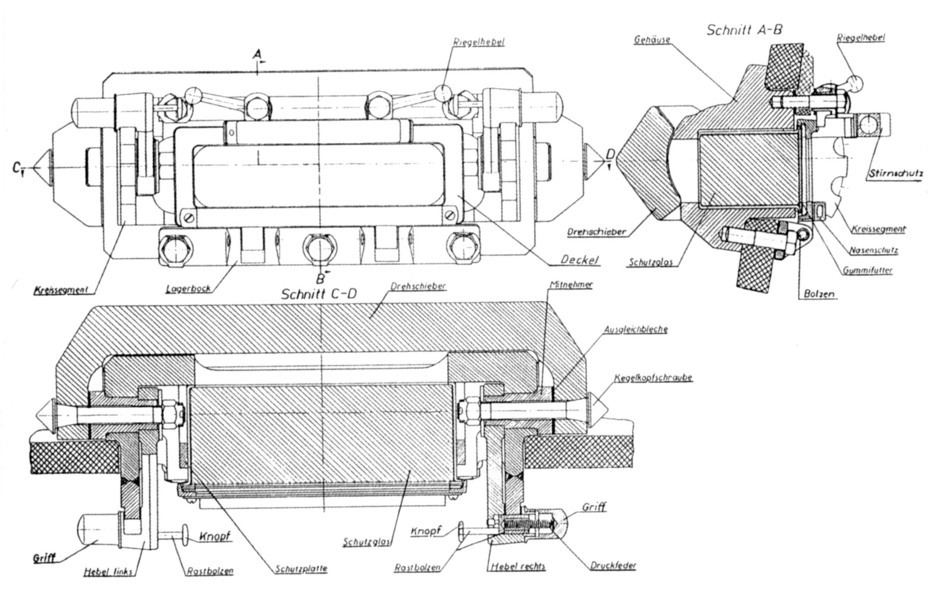
The PzIII Ausf.G was produced in parallel with the PzIII Ausf.F. This reflected on the tank's exterior. Every industry in the world used leftover parts, and the Germans were no exception. The PzIII Ausf.G tank that ended up in the USSR was a great example. Unfortunately, the serial number of this vehicle has not been found, so it is impossible to determine where it was produced. The tank received the new thicker rear plate and turret, but the driver's observation device and commander's cupola were still the early type.
Conspiracy theories about a strange tank that was specially made to sell to the Russians are unfounded. Other combinations of the PzIII Ausf.G and Ausf.F were observed, for instance one with a whole turret from the Ausf.F. Some tanks had new turrets, but old cupolas. These «hybrids» were rather widespread.
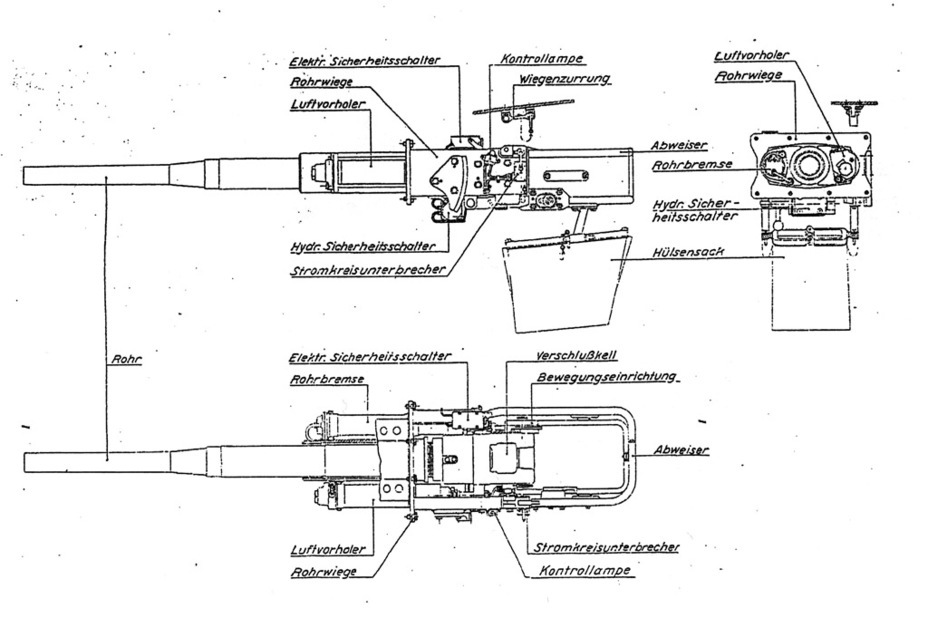
A dire need for modernization arose after only 2 months of PzIII Ausf.G production. The weakness of the PzIII's main gun was discovered during the fighting in France and Belgium. 40 mm of cast armour used by French tanks could only be penetrated with the 3.7 cm KwK from 200-300 meters. This drawback was mitigated by the fact that French tanks, especially light ones, often had armament that was too weak to capitalize on this advantage in armour. However, a meeting with the SOMUA S 35 or Renault D2 could end poorly. These tanks were armed with 47 mm cannons that could penetrate German tanks from a distance where they themselves remained invulnerable. Another serious problem for the Panzerwaffe was the Char B1 bis heavy tank. Its 60 mm armour was an impregnable defense against 37 mm guns.
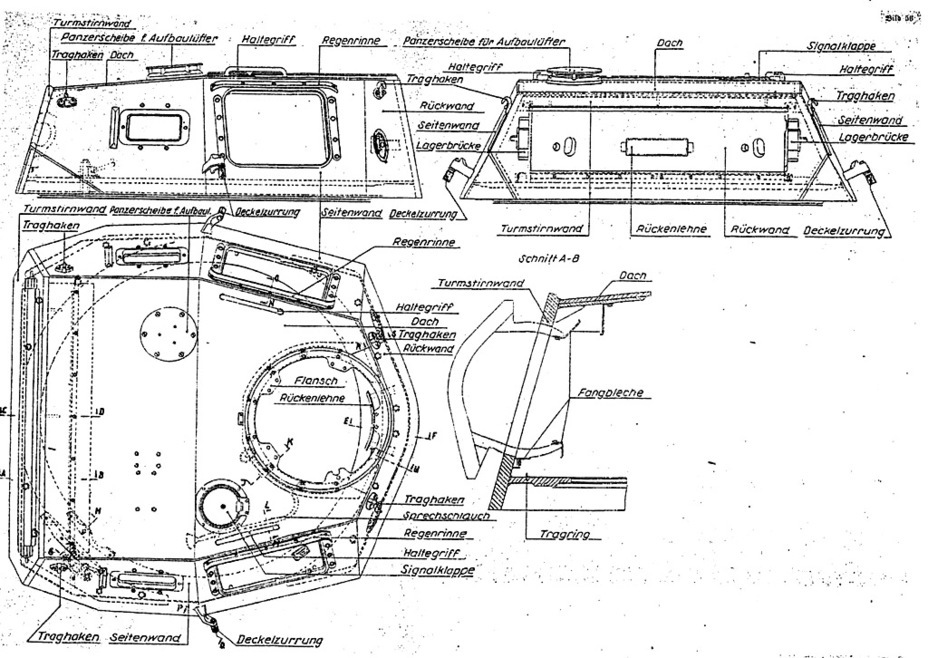
The order to begin installing the 50 mm tank gun into the PzIII was given in June of 1940. The first 5 tanks with this gun were completed before the end of the month. The development of the 5 cm KwK 38 began in March of 1938. The specifications required the armour piercing shell to penetrate 40 mm of armour at 30 degrees from 700 meters. The gun barrel had to remain within the dimensions of the hull.
The gun was easy to fit into the PzIII turret, but some changes had to be made. The gun mantlet was reworked. The idea with an internal gun mantlet proved poor. This kind of design was often jammed by bullets and shell fragments. The idea of a pair of MG 34 machineguns that could be aimed up and down independently of the gun also proved to be a mistake. The number of machineguns was reduced to one, which was rigidly bound to the cannon. Now the cannon and machinegun were protected by one mantlet with observation ports. The turret roof had to be changed. The fan moved a bit forward and to the right.
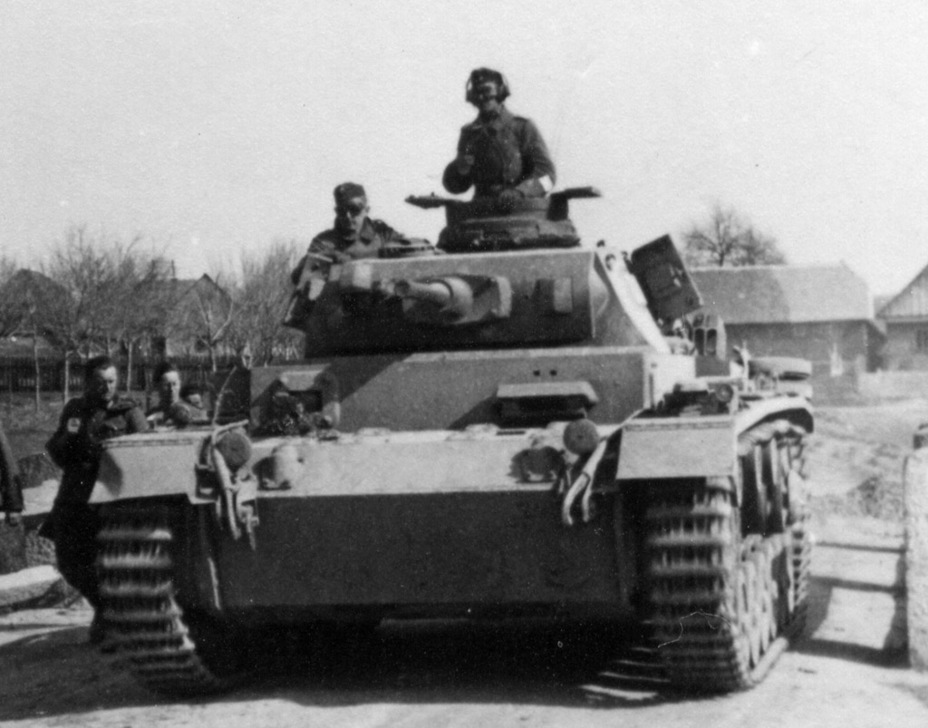
The attempt to launch production of the Pz.Kpfw.III with a 5 cm KwK 38 L/42 in June failed. Even though Daimler-Benz had completed the first few tanks by the end of the month, they were only delivered in July. The delivery in July was also humble: 17 tanks out of the scheduled 35. 67 tanks armed with 37 mm guns were delivered alongside that. Only in August did the situation reverse: 84 tanks were delivered out of the planned 77. Tanks with 37 mm guns were still assembled for some time after that: 3 in August, 5 in September, and the last 5 in October. The aforementioned MNH began production of the PzIII Ausf.G last, in June of 1940. The factory only produced tanks with 50 mm guns, but slowly: initially only 3 tanks per month.
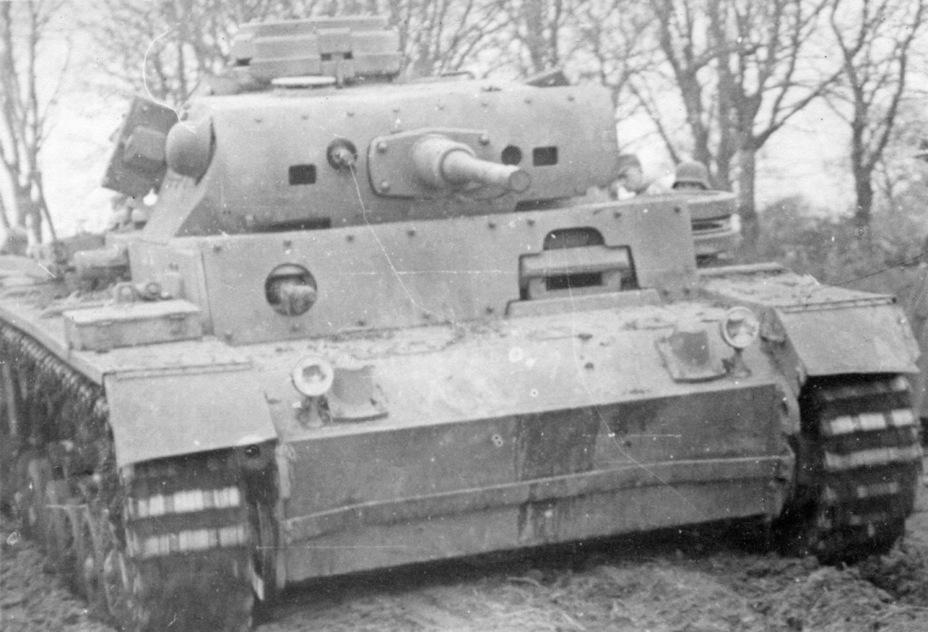
Already existing tanks were also modernized. First of all, they were rearmed with 50 mm KwK 38 L/42 guns. At the same time, additional armour like the kind installed on PzIII Ausf.E-F was added. The mass of the tank increased after this modification, and the load was uneven. Understanding what that meant, the Heereswaffenampt included the modernization of the suspension for all tanks that received additional armour. The tanks received reinforced torsion bars and shock absorbers, as well as 400 mm wide track links.
The modernization entered full force in March of 1941. The number of tanks with the 3.7 cm KwK decreased. By the end of 1941 there were 203 of these vehicles remaining, including experimental prototypes. By the end of 1942 that number declined to 89 units. In the majority of cases these were training tanks.
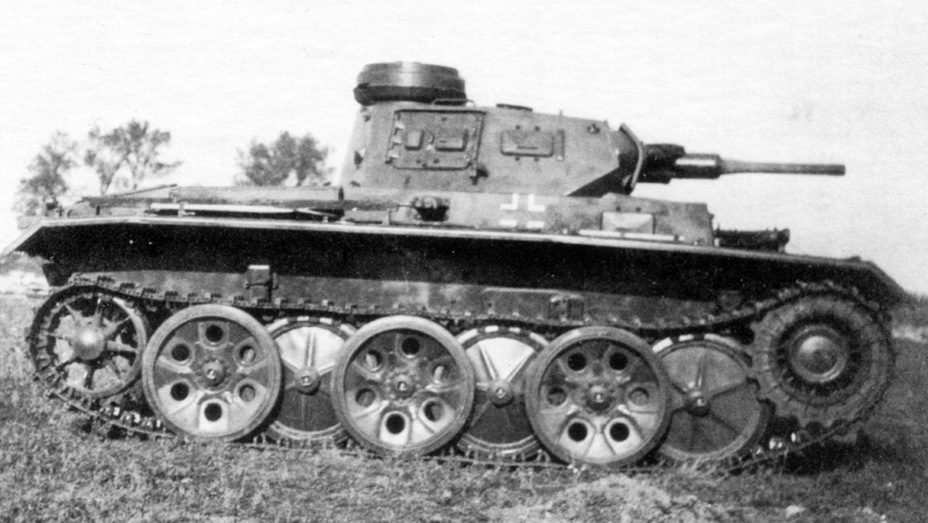
The delays with PzIII Ausf.F production at some factories resulted in delays in Ausf.G production. The last tanks of this type were only delivered in the spring of 1941.
The fate of the last 20 tanks built by Alkett is interesting. These tanks received PzIII Ausf.H type turrets and were sent to FAMO. There they underwent a radical suspension refactoring. This was done as a part of experimental works conducted by the 6th Department. In August of 1940 FAMO received an order for production of a new tank suspension with interleaved road wheels similar to the Sd.Kfz.9 halftrack that was produced at FAMO.
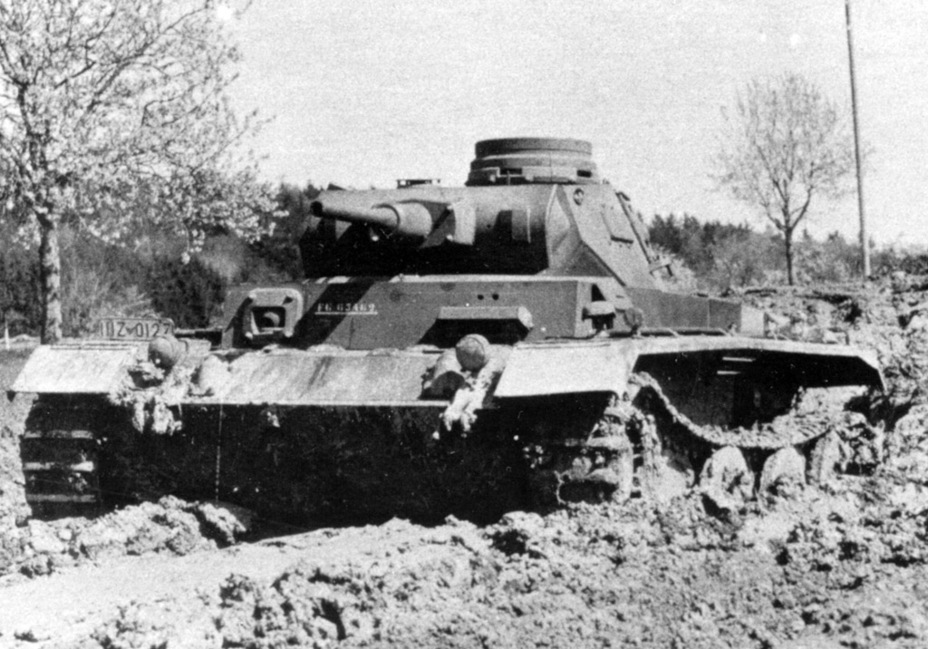
Tanks with the new suspension were called Z.W.40. The designers got rid of return rollers, since the new road wheels were 850 mm in diameter. The vehicles received new evacuation hatches, since the new suspension blocked off the old ones. However, a number of vehicles were left with their old hatches.
The installation of large diameter road wheels increased the tank's clearance. The Z.W.40 did not receive additional hull armour. The conversion of each vehicle cost 21055 Reichsmarks.
In addition to the 20 Z.W.40 that were ordered there was another one, the very first. This Z.W.40 was converted from a PzIII Ausf.G with serial number 65462, also an Alkett made tank.
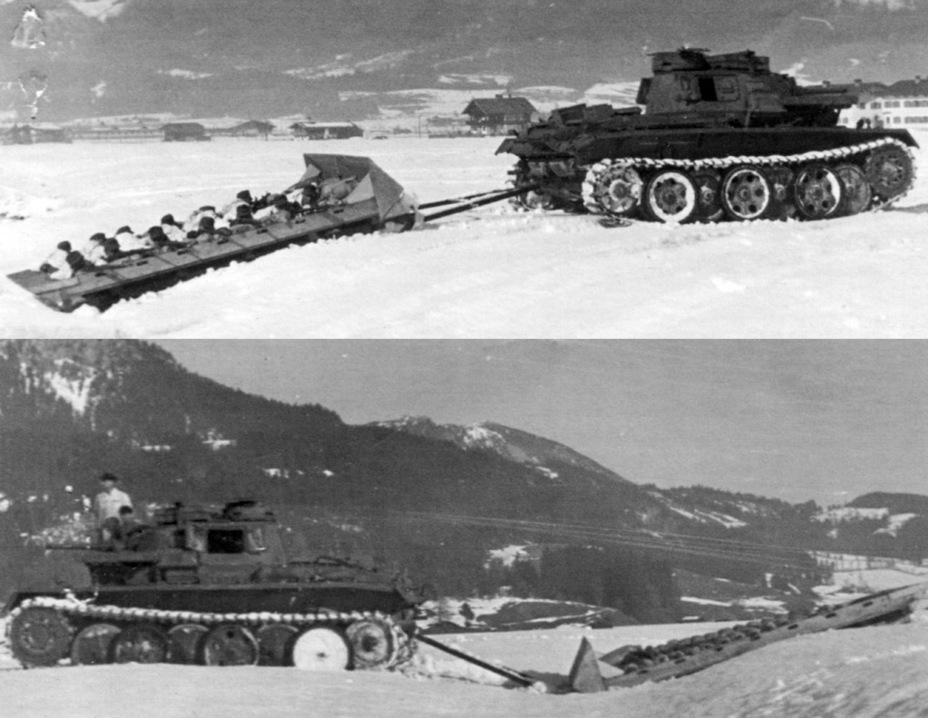
The results of trials were mixed. On one hand, off-road performance improved due to increased clearance. This was most clear in snow. The Z.W.40 was much more confident here than the Z.W.38. The tank could navigate 65 cm deep snow banks. In addition, summer trials showed that the Z.W.40 could maintain a high speed without issues with road wheel rims. However, the tank had mechanical issues. Tank 65531 had its turning mechanism break during trials in Greece. The main problem was that this suspension was too late. Work on the VK 20.01 was underway, and in late 1941 it transformed into the VK 30.02. In addition, even with the new suspension neither the armour nor the armament of the PzIII could be improved. Work did not progress past the trial batch of Z.W.40 vehicles. The tanks remained in use as training tanks.
Late corrections
Production of the PzIII Ausf.H was planned to begin before the start of WWII. The order was given by In.6 on June 11th, 1938. This version was supposed to be the first one with a 50 mm gun. The 7.Serie/Z.W. turret was called Z.W.39. However, due to gearbox issues discovered in the fall of 1939 the production plans had to radically change.
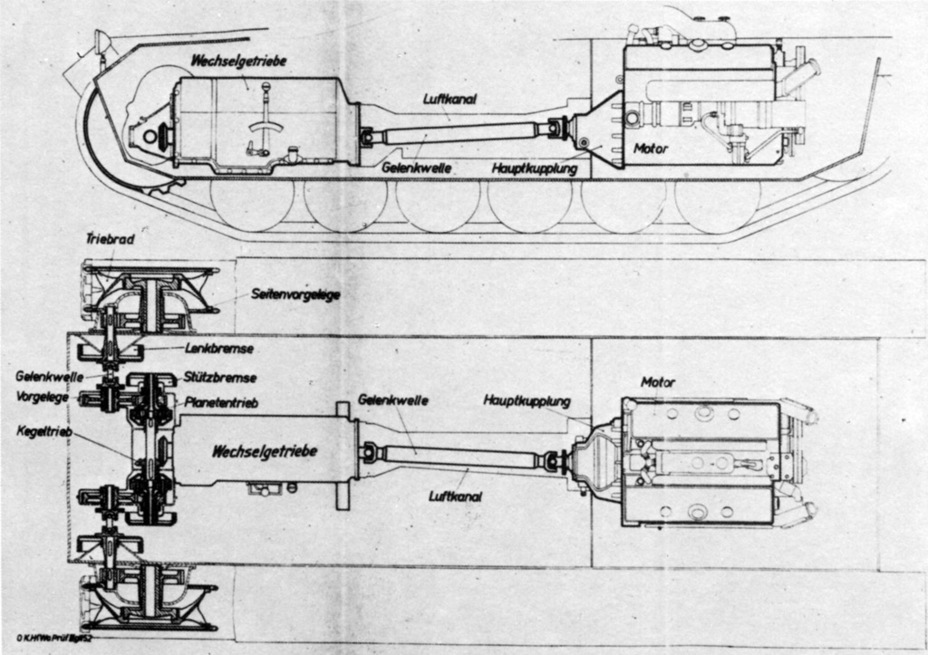
The situation with the unreliable Maybach Variorex 328 145 gearbox was made more complicated due to the fact that it was no longer possible to introduce significant changes into the tank's design. The Variorex was a rather compact gearbox, and the ZF SSG 76 was much longer. The issue was corrected in an unusual way: the main clutch was mated directly to the engine, and the turning mechanism remained the same. In order to differentiate the two, the new gearbox was named SSG 77. The tank's speed was significantly reduced with this gearbox to only 42 kph.
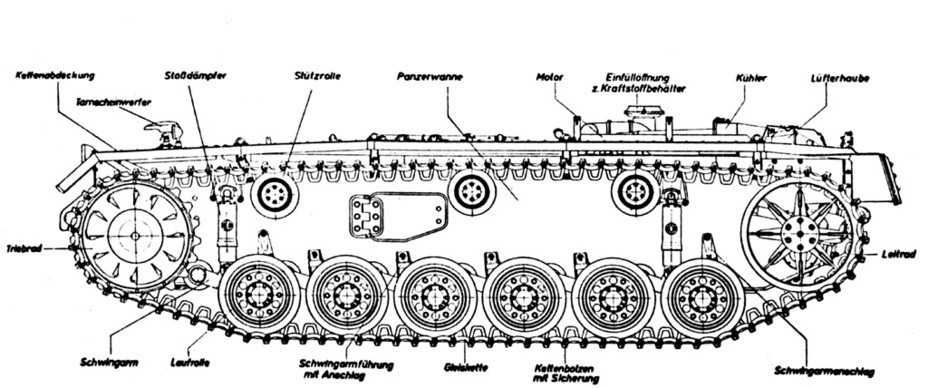
While preparations for PzIII Ausf.H productions were underway, new changes were introduced. Back during the Polish campaign it became clear that the PzIII's armour was insufficient. The mass of the PzIII Ausf.H increased by two tons compared to the PzIII Ausf.E. This meant that it was necessary to modernize the suspension. The drive sprockets, road wheels, idlers, and shock absorbers were changed. The tank received 400 mm wide tracks.
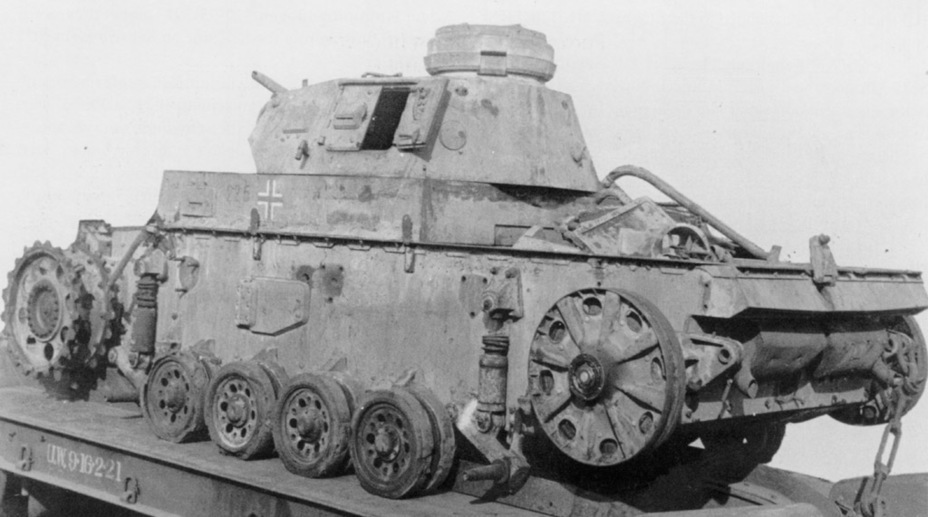
The very first PzIII Ausf.H tanks produced in October-December of 1940 still had the old style running gear, but with 400 mm wide tracks. Even these old tanks had noticeable external changes. First of all, the applique armour on the front of the turret platform was different. It was put right up against the main armour, and openings were cut out for the driver's observation device and machinegun mount. The smoke projector device also changed. It now had an armoured cover that shielded it from bullets and small shell fragments.
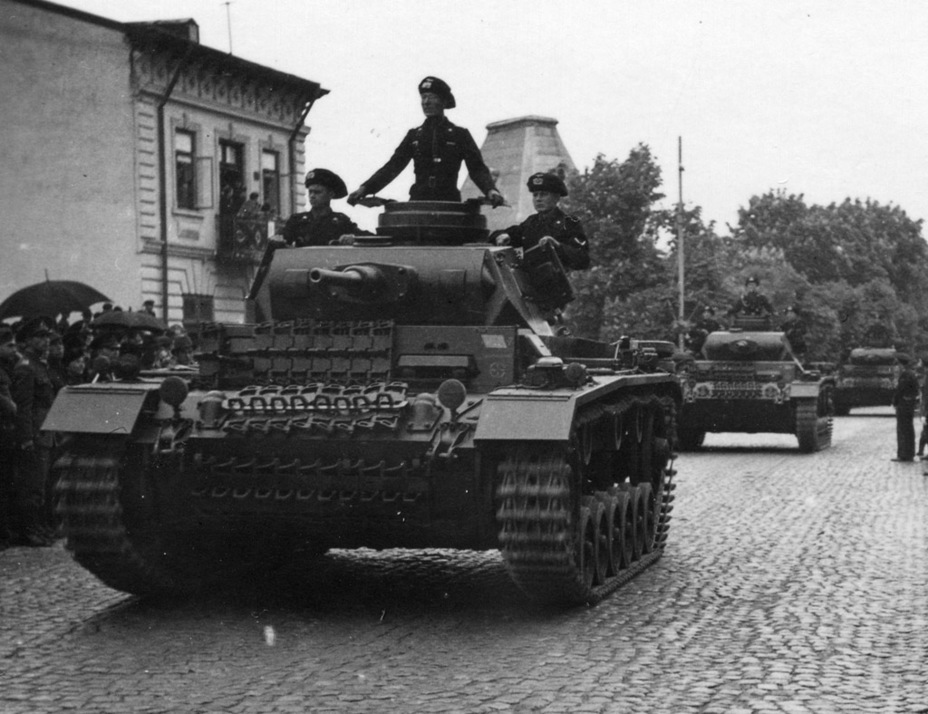
Tanks with new running gear were delivered starting with early 1941. At this point the evolution of the Z.W. largely stopped. The armament and protection of later PzIIIs were improved, but serious changes to the chassis were no longer made.
The 7th series was supposed to be small. The increase of the hull armour to 50 mm was coming, and the applique armour was only temporary. The turret armour was also still only 30 mm. Only 250 PzIII Ausf.H were expected in August of 1940 instead of the initially planned 400. The number of companies was decreased to 4: Daimler-Benz Werk 40, MAN, MIAG, and Henschel.
The plan more or less came true. Daimler-Benz built 50 tanks with serial numbers 66001-66050. MAN delivered 98 tanks with serial numbers 66101-66198 out of the initially planned 112. MIAG produced 72 tanks with serial numbers 66301-66372. Henschel and Wegmann produced 66 tanks instead of the initially planned 16, serial numbers 66401-66466. In total 286 PzIII Ausf.H tanks were built. Delivery concluded in April of 1941.
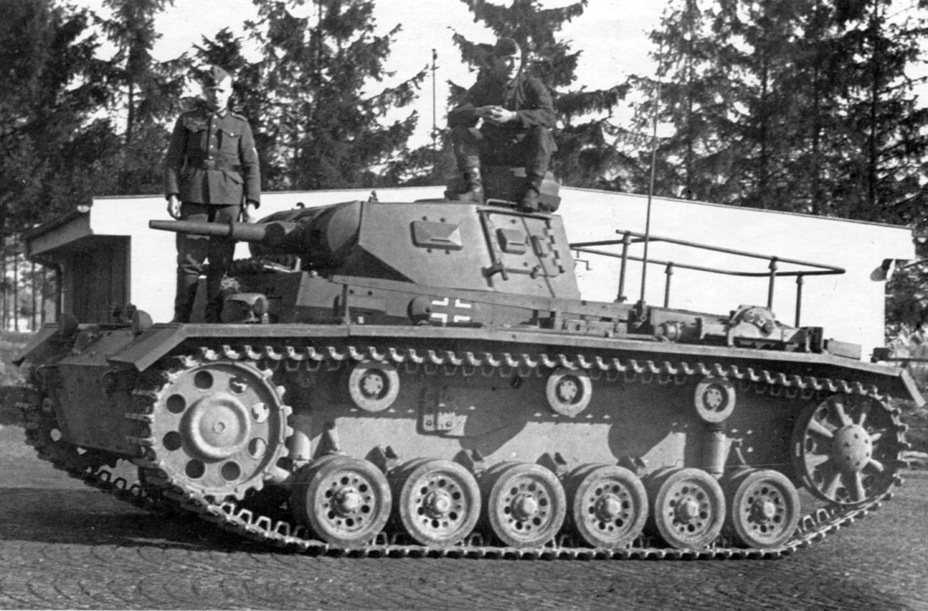
After the end of the campaign in France the Wehrmacht had a desperate need of commanders' tanks. However, it seemed that production of commanders' tanks was not a priority, as Daimler-Benz delivered the first two Pz.Bef.Wg.Ausf.H in November of 1940. Production only ramped up in December when the factory delivered 27 tanks. The total output of this tank rarely crossed the threshold of 20 tanks per month. The Pz.Bef.Wg.Ausf.H remained in production with some pauses until January of 1942, when 14 tanks were delivered.
The extended lifespan can be explained by the fact that the Pz.Bef.Wg.Ausf.H has the same chassis as the PzIII Ausf.J and that there was no need to replace it as new modifications rolled in. In total Daimler-Benz Werk 40 produced 175 tanks of this type with serial numbers 70001-70175.
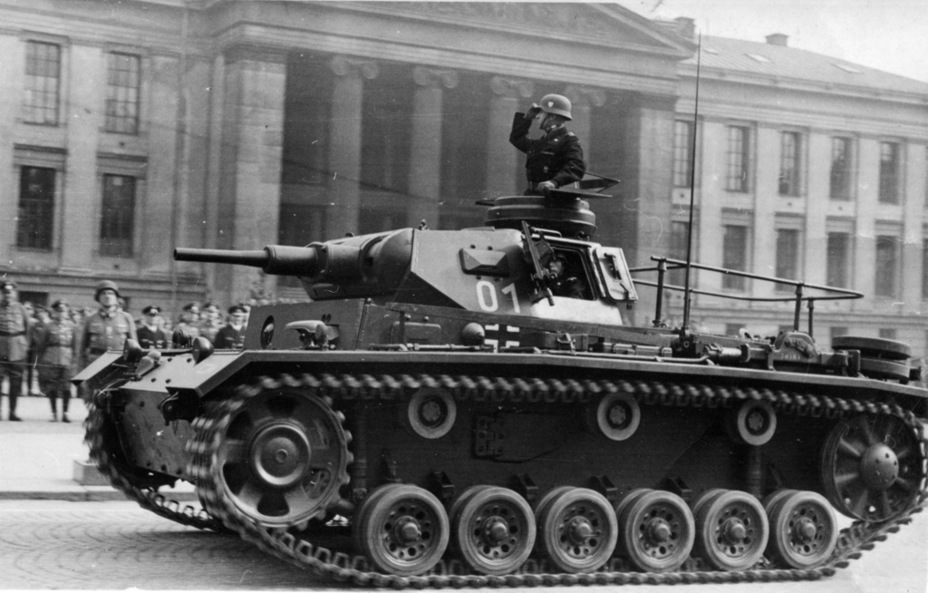
The very first Pz.Bef.Wg.Ausf.H were nearly identical to the Pz.Bef.Wg.Ausf.E. It was only clear that these were the Ausf.H model by their serial number, shape of additional armour, and 30 mm thick rear plate. The running gear began to change, but it happened gradually. Some vehicles had new drive sprockets, but old idlers. The Pz.Bef.Wg.Ausf.H gained its final form in mid-1941. By this point the dummy 37 mm gun was replaced with a dummy 50 mm gun. The gun mantlet did not change.
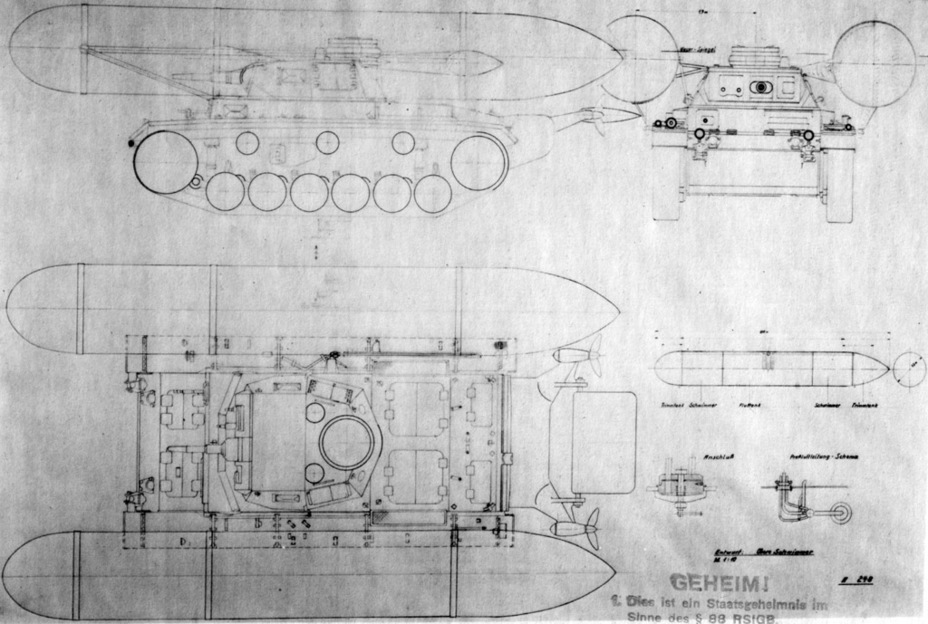
The conversion undergone by a portion of PzIII Ausf.G and Ausf.H tanks deserves a separate mention. It begins on July 1st, 1940, when preparations for operation Sea Lion were underway. The Germans needed various weapons to land in England, which included tanks that could cross water hazards. The PzIII was too heavy to make into an amphibious tank. However, Alkett had a backup plan: the UT. The tank was equipped with pontoons, thanks to which it only submerged up to the commander's cupola. The UT did not progress past a draft project, remaining nothing more a curiosity.
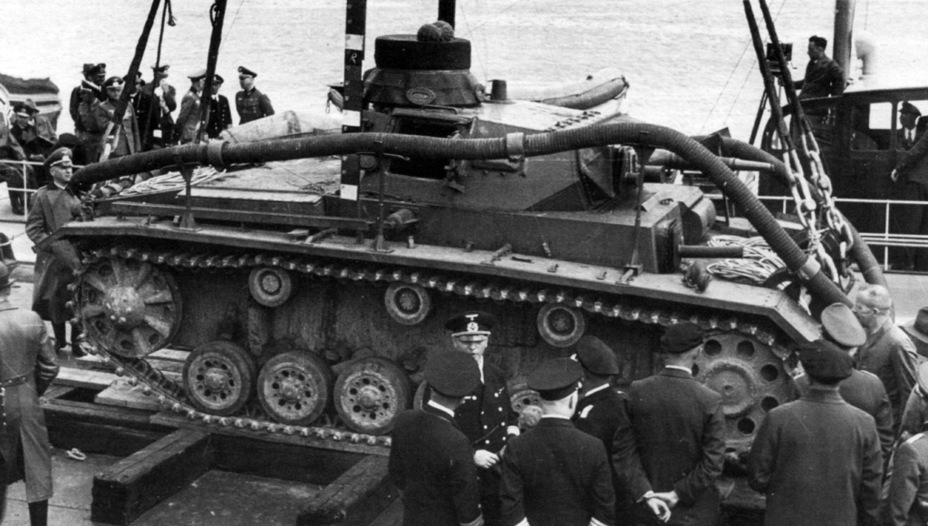
The fate of a PzIII tank that could drive along the bottom of a body of water was different. These tanks were called UK (Underwassserkampffarhzeugen). Of course, nobody expected them to cross the entire La Manche on their own. The idea was to drop these tanks from transport ships near the shore, from where they would drive on their own. The hull and turret were made waterproof. The driver's observation port, gun mantlet, hull MG, and commander's cupola were sealed with special covers. The air intakes for the engine compartment were sealed. Air was drawn in through a long flexible hose with a buoy on top.
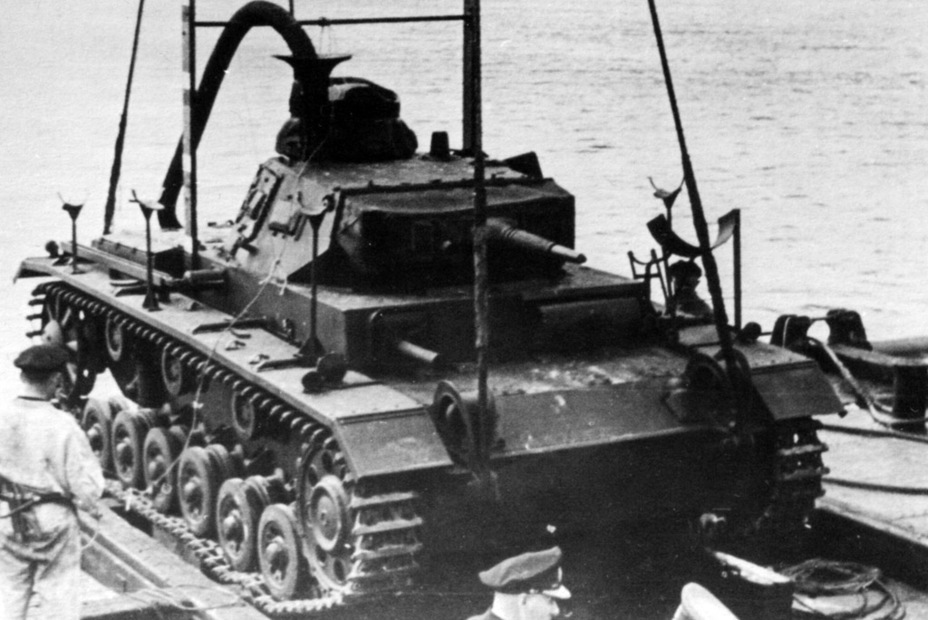
According to plans for July 1st, 1940, 100 PzIII tanks would undergo this conversion. 90 of these tanks would have 37 mm guns and 10 50 mm guns. The maximum depth for these tanks was estimated to be 15 meters, but later it was reduced to 7. The first trials took place by July 9th. The name Tauchpanzer III appeared around this time as well. At a depth of 3 meters, the commander could still observe though his cupola if it was covered with a cover that had openings filled with glass. Trials to submerge to 10 meters ended in failure, as the engine compartment began to flood at only 7.5 meters. Despite this, the trials were judged a success.
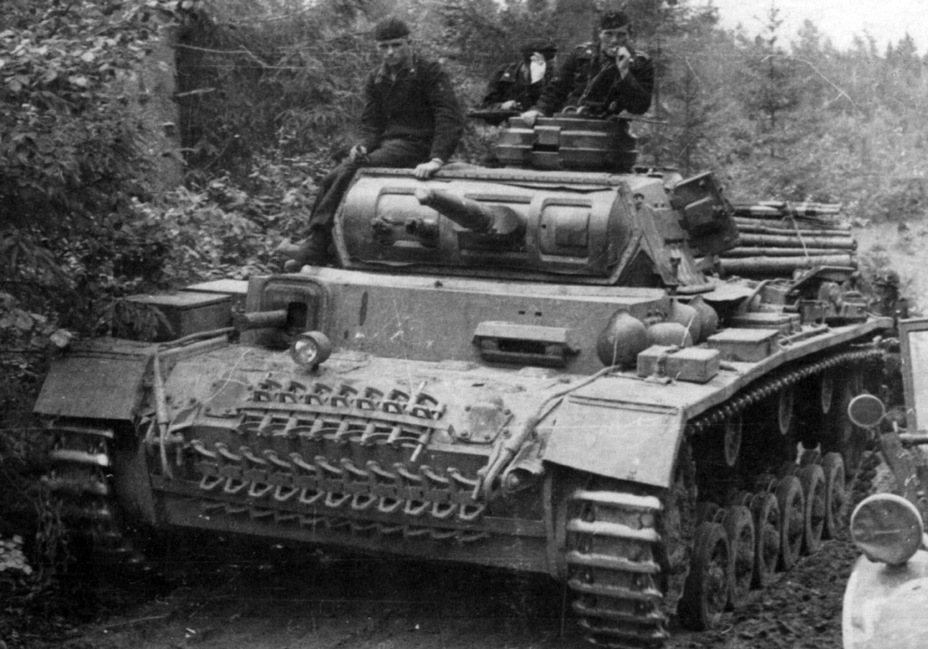
Hitler gave the order to produce Tauchpanzer III and IV tanks on July 21st, 1940. 200 tanks would be converted: 148 PzIII Ausf.G, 4 Pz.Bef.Wg.III Ausf.E, and 48 PzIV Ausf.D. The contract for conversion went to Alkett. The deadline was the end of August of 1940. Conversion of each tank cost 21364 Reichsmarks. Alkett also converted 52 PzII Ausf.C into amphibious tanks.
According to correspondence, the factory completed the order fairly quickly. The number of tanks with 50 mm guns was greater than planned: 20. The tanks went to fill 4 battalions of «diving tanks» formed in late June 1940 with the indexes A, B, C, and D. By November it became clear that no landing in England will take place, so they were sent to Magdeburg.
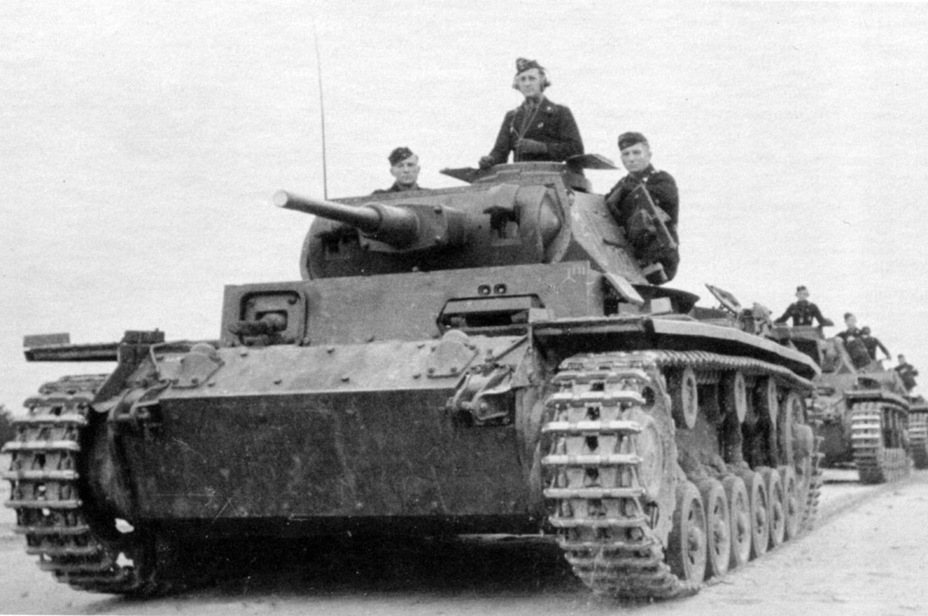
Preparations for Operation Barbarossa began in 1941. The Wehrmacht ordered another 105 Tauchpanzer tanks. This included PzIV Ausf.E, PzIII Ausf.H, and Pz.Bef.Wg.Ausf.H. The conversion was complete in the spring of 1941. All tanks were ready for the invasion of the USSR.
Most numerous
Unlike the PzIII Ausf.E-F, Ausf.G tanks took nearly no part in the fighting in France. This was because production was only starting in the spring of 1940, and the tanks did not go straight to the front from the factory. Mass deliveries only began in the summer of 1940 when bloodied units began to receive reinforcements. With the arrival of the Ausf.G and Ausf.H the PzIII finally began taking the place of the Wehrmacht's main tank. The PzIII finally became the most numerous tank, ahead of the PzI and PzII, by early 1941.
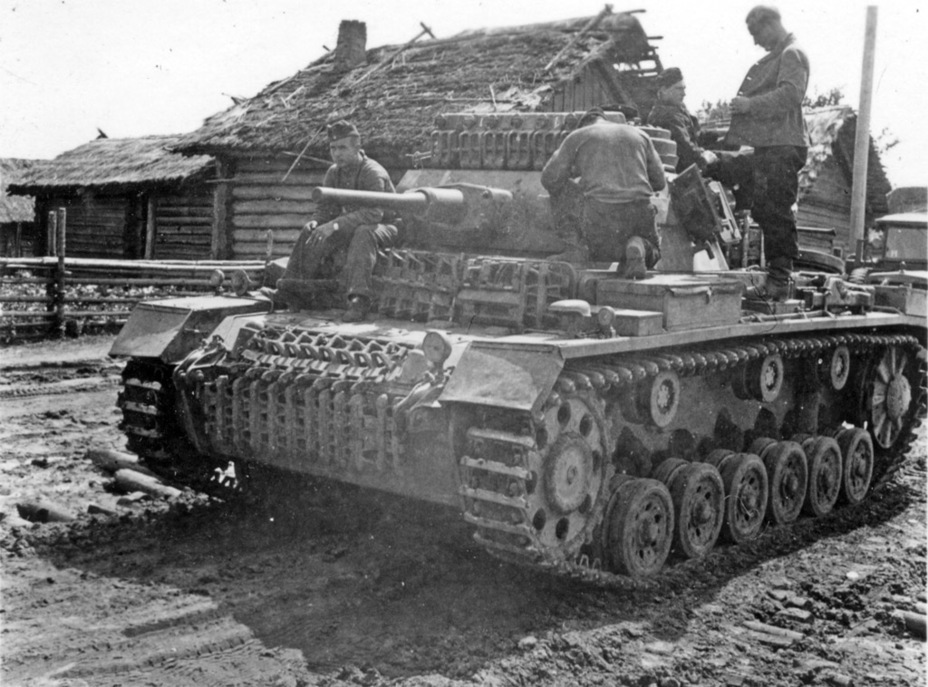
By the fall of 1940 the PzIII was Germany's best tank in armament, protection, and mobility. This was largely due to the 50 mm KwK 38 gun. Until its installation, the PzIII's advantage over the PzIV in armour penetration was slight, and the HE effect of the shell was greatly inferior. The Pz38(t)'s cannon was superior to the German 37 mm gun.
Not all was perfect. The armour of the Char B1 bis was still impervious except at point blank range. The use of the PzGr 39 armour piercing shell with a ballistic cap improved matters, but even then the armour could not be penetrated from far away.
Another unfortunate incident was the introduction of the Matilda tank in May of 1940 at Arras. The British infantry tank had 75 mm of armour and could only be penetrated by a subcaliber PzGr 40 round from up to a few hundred meters. On February 19th, 1941, Hitler gave the order to equip the PzIII and PzIV tanks with a 50 mm gun that was 60 calibers in length. For the PzIV this gun proved only experimental, but the PzIII received it as its most powerful armament. It was installed on these tanks starting in late 1941.
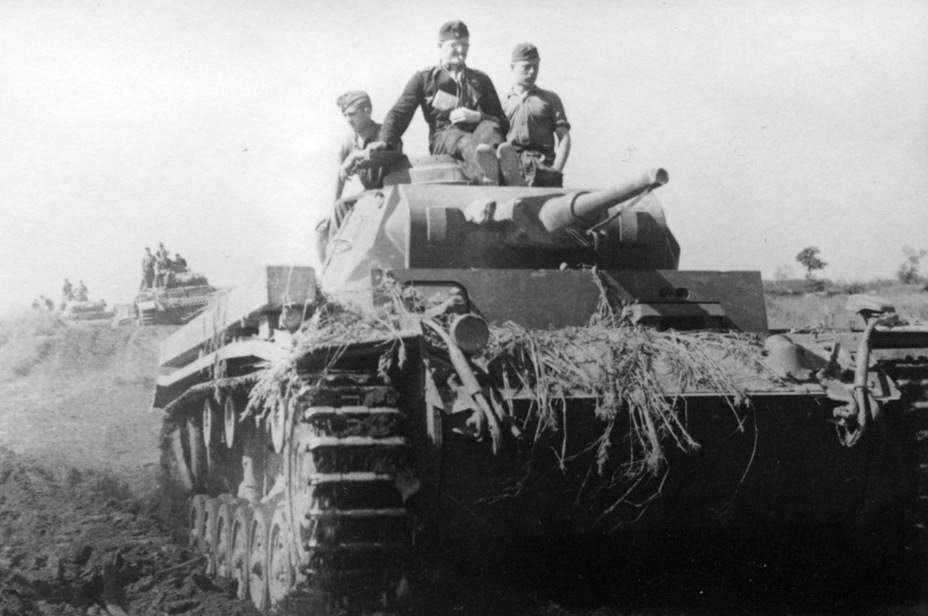
The PzIII was among the best tanks of its time in the combination of mobility, armament, protection, visibility, crew comfort, reliability, and industry experience. Having began the war as a progressive, yet unreliable tank, the PzIII got rid of a number of growing pains by the spring of 1941. By that point even the Maybach Variorex gearbox was «conquered». The most noticeable difference was in comparison to British cruiser tanks, which were the first opponents of the PzIII Ausf.G and H. The German tanks that were sent to Africa received a set of «tropical» equipment and a storage box behind the turret known as the «Rommel box» (Rommelkiste). Analogous equipment was installed on most PzIII tanks in the spring of 1941.
There were issues, of course. They can be gleamed from spare road wheels being regularly carried onboard. Spare track links were also carried for more than just armour.
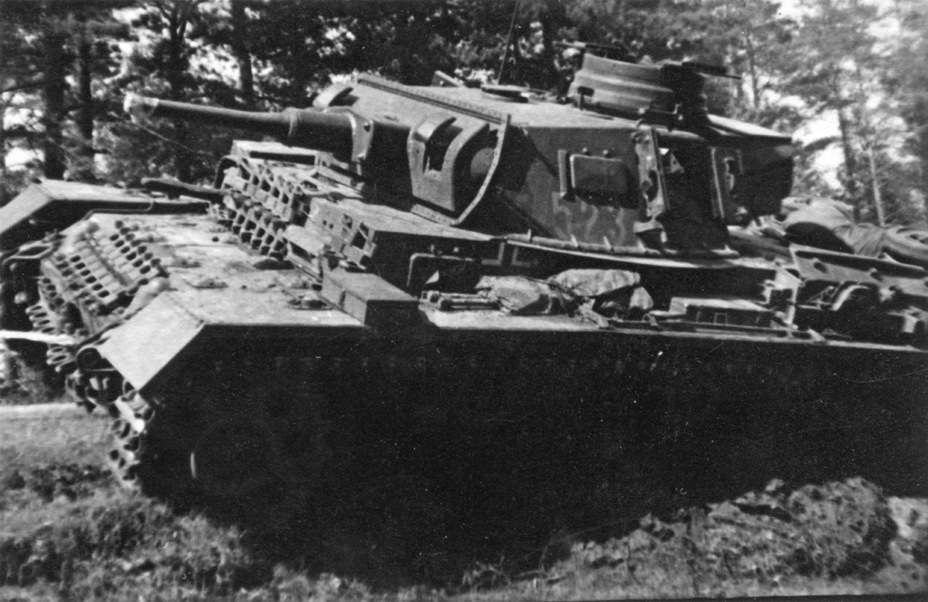
The PzIII was still the Wehrmacht's most popular tank by the start of the war with the USSR. 1090 tanks with 50 mm guns and 350 with 37 mm guns were available on June 1st. In addition, most of the 330 commander's tanks were Pz.Bef.Wg.III. Most tanks with 50 mm guns were Ausf.G or H variants. This was their time to shine. The PzIII Ausf.J would not arrive until the fall of 1941.
The first use of the Tauchpanzer III's special ability took place on June 22nd, 1941. The best known event was the crossing of the Western Bug by tanks of the 18th Tank Division near Brest Fortress. Underwater driving equipment was also used by the 3rd Tank Division to cross the Dnieper. After that the use of «diving tanks» ended, and they were used as ordinary tanks. This initiative proved nearly useless. A much more effective design was the one produced by Straussler for Sherman and Valentine tanks. When using it, tankers did not have to built up a complex system of seals or worry about the crossing depth.
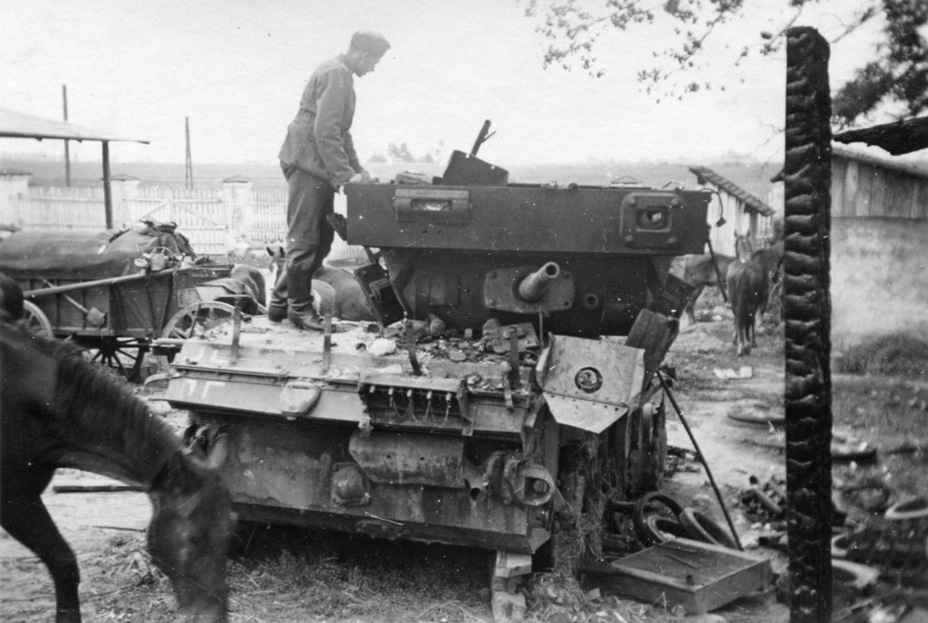
The Eastern Front was far from a vacation for German tanks. The appearance of the T-34 and KV was unexpected. Nevertheless, the German medium tanks could fight the T-34 almost as equals. Despite being inferior in armament, protection, and mobility, they had other advantages. As mentioned before, the PzIII was a well worked out vehicle by the spring of 1941, having shed a number of growing pains. The engineers managed to do this after 1.5 years of battle experience.
The T-34 did not have a year and a half. The Soviet military was well aware of its insufficient vision and protection. Nevertheless, there was no time to put the A-43 (T-34M) into production, and even the prototype was not completed.
Do not forget that a year and a half of war also means trained crews, many of whom saw battle. However, even in its raw state and with not the best trained crews, the T-34 was a very dangerous enemy for the PzIII. Even applique armour did not save the tank, and its 50 mm gun had great difficulty with the T-34.
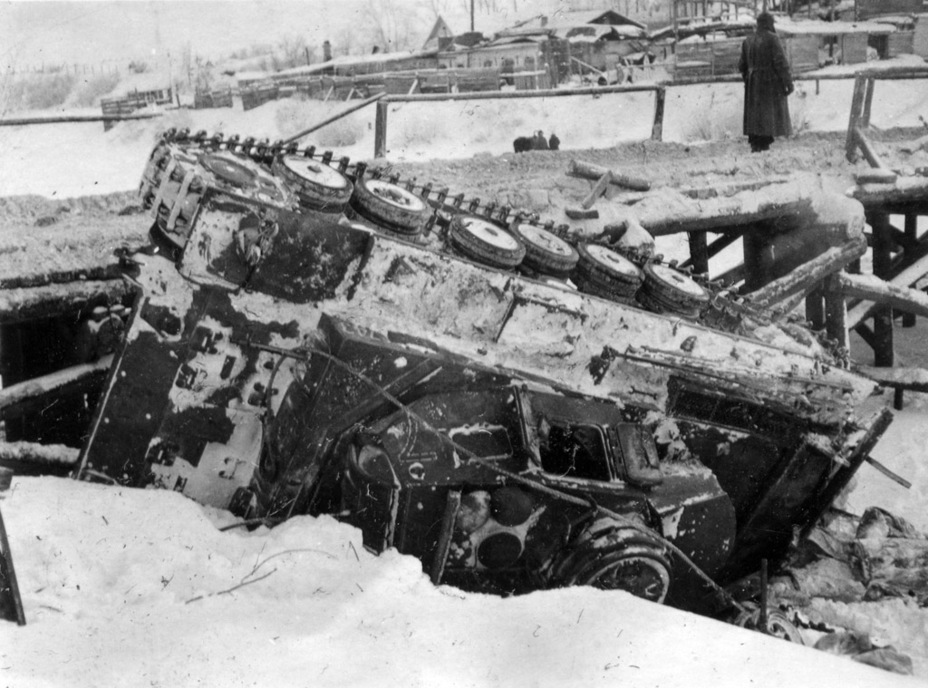
When analyzing the loss statistics, it must be said that the German concept of a «total loss» was very tricky. Nevertheless, they do allow some conclusions to be drawn regarding the quality of one tank or another. 660 PzIII tanks were lost in 1941, or about half of those available at the start of Operation Barbarossa. This is a fairly high number, but not that high when you compare it with other tanks the Wehrmacht had. The Pz38(t) is a great example, as more tanks were lost than available at the start of Operation Barbarossa (796 tanks compared to 722 available on June 22nd). Of 517 PzIV tanks, 348 were lost in 1941. In addition to its combat capabilities, the PzIII was easy to repair.
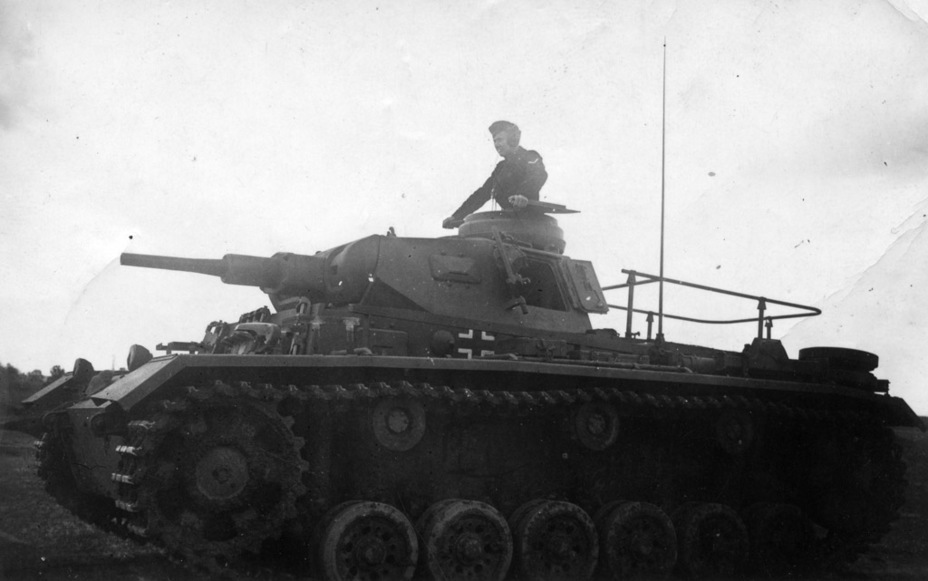
Heavy losses suffered in 1941-42 meant that early PzIIIs were nearly extinct on the front lines by the spring of 1943. A few surviving tanks were withdrawn into training units. Some received 60 caliber guns or were converted into PzIII Ausf.N tanks with 75 mm guns. Some tanks fought against Allied forces in Normandy. One tank of this type survives to this day. This is a PzIII Ausf.H lost in 1944 during a river crossing. It was raised in the 90s and can be seen in Kiev. In addition, a number of PzIII Ausf.H tanks converted into Ausf.Ns were discovered recently. One of them is currently being restored in Poland.
Translated by Peter Samsonov. Read more interesting tank articles on his blog Tank Archives.
Sources:
- Panzer Tracts No.3-2 Panzerkampfwagen III Ausf.E, F, G, und H development and production from 1938 to 1941, Thomas L. Jentz, Hilary Louis Doyle, 2007, ISBN 0–9771643-9-X;
- Panzer Tracts No.3-4 Panzerbefehlswagen Ausf.D1, E, H, J und K, Thomas L. Jentz, Hilary Louis Doyle, 2010, ISBN 0–9815382–8–2;
- Der Panzerkampfwagen III und seine Abarten, Walter J. Spielberger, Motorbuch Verlag, 1994, ISBN 978-3879433360;
- Author's photo archive.






